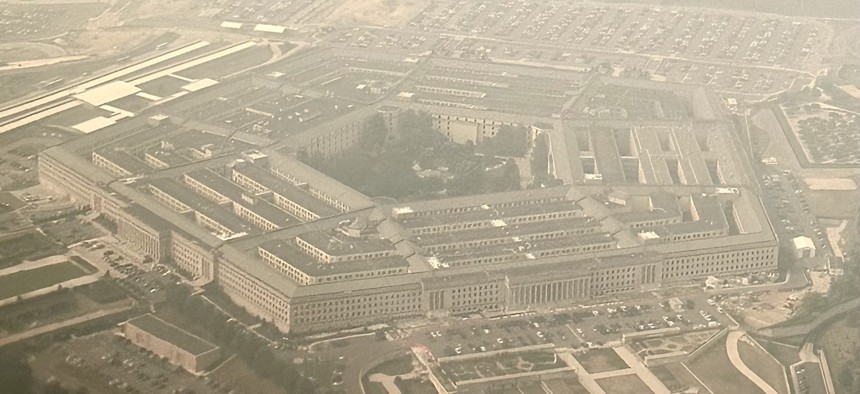Even The Best Federal Health Benefits Won’t Protect You From The Wildfire Smoke
Great insurance and benefits only helps you to manage potentially terrible consequences. Better to prevent.
Feds are blessed with pretty solid health benefits—consistently rated as one of the most beloved pieces of fed compensation. The Federal Employees Health Benefits Program, including 230-plus plans covering over 8 million people, including family members and retirees, is the largest employer-backed insurance program in the world.
No one in the government’s employ is happy about the recent rise in premiums—an average 7.2% this year over last. But as a fed you get FEHBP’s comprehensive insurance options, along with additional benefits such as extensive sick leave (generally, feds earn and bank up to 13 such days per year) and—if needed—disability retirement to boot.
Great stuff. But, recently it’s been the dangerous orange haze that stagnated over half the country that threatens your health—and in ways even good benefits can’t help you with. So, given that—and that this is a problem we’ll see again in the near-future—this week we want to well, air facts about it.
Earlier this month the Environmental Protection Agency’s “PM 2.5” AQI—an index of small particulates—soared. “Good” is below 50. But, by midweek, air in heavily populated parts of the Eastern U.S., including New York City and Washington, D.C.,, reached well into the mid-200s—very unhealthy.
Now if rarely discussed air quality measures make your eyes glaze over like the smoke itself, read on for some plain English on what’s really in that haze.
“Particles that come from wildfire smoke are small—really, really small,” Dr. Susan Anenberg, an environmental scientist at George Washington University (and advisor to the Environmental Protection Agency) told Government Executive. “They are so small that they’re the kind that can get into the deepest part of our lungs—the alveolar region—crossing into the bloodstream. Once that happens, the particles can affect every organ of the body.”
What’s the big deal with small particles? The problem is partly what’s in them! For doubters, Anenberg—who chairs the Environmental and Occupational Health Department at the George Washington University Milken Institute School of Public Health—shares the ugly truth.
“It’s really a mixture of a lot of different chemical components,” Anenberg said. When it burns you get particles but also potentially even more toxic gases. Particles from biomass in the smoke are toxic, she said, adding, “But it’s not just natural biomass burning, it's also the built environment, from our roads, cars, buildings, toxic metals, asbestos—everything, even pieces of furniture!”
In short, the burnt stuff making the air resemble pumpkin soup is not anything you really want to breathe.
“The recent situation is the worst I’ve ever experienced,” she said. When wildfires pollute the air as much as recently, she says, “don’t go outside unless you have to.” N95s and KN-95 masks can help—some—by stopping particles. “But the gasses still get through, so it’s not perfect.”
The message: Feds suffering health consequences from the smoky air of course should seek medical help, and make use of their usually very good health insurance. Whether it is to cover treatments for asthma, exacerbations of COPD, or any other health problem from the spike in air pollution.
As per Dr. Anenberg’s graphic description of what small particles really means, and advice to stay inside and use masks to prevent trouble, no amount of great health insurance and or sick leave offers any real proactive protection against this kind of threat. Great insurance and benefits only helps you to manage potentially terrible consequences. Better to prevent.
Feds and their unions are on Anenberg’s wavelength about the smoke. For example, the National Association of Letter Carriers, cautioned workers and “urged all carriers to be vigilant about potential harmful health effects” of the polluted air. The American Postal Workers Union issued a similar detailed advisory.
And across the federal government, self-protection and prevention have been the order of the day throughout the event. “Reduce exposure to smoke/poor air quality,” posted the Department of Veterans Affairs. “Stay inside. Use air conditioning if available and ensure you have a clean filter. Check your local air quality before going outside.” CDC and EPA websites advised the same, with the CDC further offering a guide specifically to help reduce health impacts to outdoor workers.
The Office of Personnel Management issued a memo pressing agencies to protect “the health and wellbeing of our federal workforce”—strongly recommending agencies opt for telework wherever possible during the poor air quality event, and that all feds stay up to date on the situation via the EPA site AirNow.gov.
As the smoke clears on the East Coast this week, the outlook in the continental U.S. for the rest of the summer is for average wildfire activity. But parts of the Pacific Northwest, Northern Plains and especially into Canada, experts predict greater-than-average fire activity, with worse smoke hazards downwind. Unfortunately, as Canadian authorities note, already the wildfire picture is worsening in Western Canada.
Feds have solid health and sick leave benefits. Many are also mindful and proactive about health—exercising, eating right and taking note of health dangers on the job. But some unfamiliar yet imminent dangers get ignored. By the looks of public spaces in D.C. and other Eastern cities, wildfire smoke—to some—means just a great sunset. If you’re one of those folks I saw out jogging last week, maybe when the smoke rolls in again, wherever that may be, consider an ounce of prevention might be worth a pound of cure.







